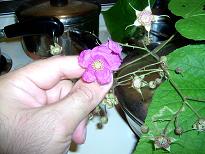
|
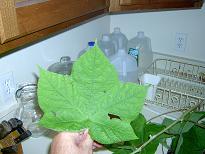
|
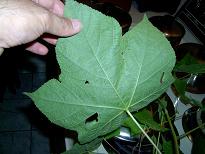
|
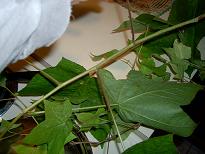
|
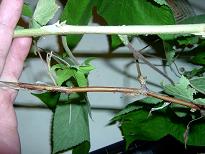
|

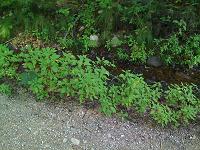 On the trail this afternoon. I wanted to find Hopniss/Groundnut (Apios americana)
near a stream. I couldn't find it, but I spotted Spotted Touch-me-not, also known as
Jewelweed (Impatiens capensis). The juice inside the leaves and stems is an antidote
to poison ivy and stinging nettles. I rubbed arms with the juice, somehow hoping it would
act as an insect repellent, but no luck. According to the
Peterson Field Guide for Edible Wild Plants of Eastern/Central North America
the green shoots (up to 6 inches high) can be boiled for 10-15 minutes in 2 changes of water
and served as cooked greens.
On the trail this afternoon. I wanted to find Hopniss/Groundnut (Apios americana)
near a stream. I couldn't find it, but I spotted Spotted Touch-me-not, also known as
Jewelweed (Impatiens capensis). The juice inside the leaves and stems is an antidote
to poison ivy and stinging nettles. I rubbed arms with the juice, somehow hoping it would
act as an insect repellent, but no luck. According to the
Peterson Field Guide for Edible Wild Plants of Eastern/Central North America
the green shoots (up to 6 inches high) can be boiled for 10-15 minutes in 2 changes of water
and served as cooked greens.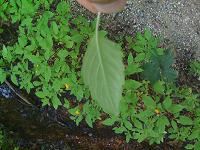
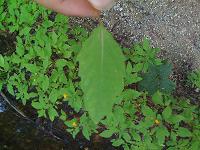 The flowers are very distinctive, making identification fairly easy. However, most of the
pictures online and the guidebooks show the stems as pale-green and translucent. But the stems
on this plant were redish-brown. The 1912
Wildflowers of New England book states on page 26 that the “plant grows from two to
five feet in height, having a reddish, smooth branching stem along with the leaves alternate.”
The flowers are very distinctive, making identification fairly easy. However, most of the
pictures online and the guidebooks show the stems as pale-green and translucent. But the stems
on this plant were redish-brown. The 1912
Wildflowers of New England book states on page 26 that the “plant grows from two to
five feet in height, having a reddish, smooth branching stem along with the leaves alternate.”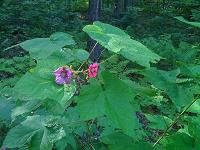
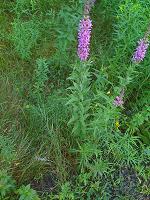 There were other plants I saw, but did not take the time to positively identify.
The picture on the left may be Purple Loosestrife (Lythrum salicaria).
The picture on the right may be Purple-flowering Raspberry (Rubus odoratus).
The Purple Loosestrife was all over the trail, but the Purple-flowering Raspberry
was only 50 yards up the hill past the Jewelweed. I’ll have to go back another time to
take more pictures.
There were other plants I saw, but did not take the time to positively identify.
The picture on the left may be Purple Loosestrife (Lythrum salicaria).
The picture on the right may be Purple-flowering Raspberry (Rubus odoratus).
The Purple Loosestrife was all over the trail, but the Purple-flowering Raspberry
was only 50 yards up the hill past the Jewelweed. I’ll have to go back another time to
take more pictures.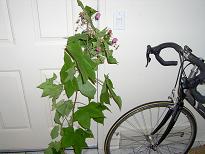
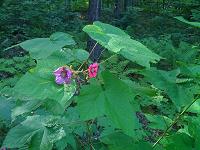 A few days ago, I saw Purple-flowering raspberry while on the trail, but wasn’t
sure of the identification. I went back to that same location today intending to
pick a stem and a couple of flowers to take back and confirm the identity.
Unfortunately, when I pulled on the stem, the whole plant came out of the ground!
Good thing I have an SUV to shuttle the plant back and identify it.
A few days ago, I saw Purple-flowering raspberry while on the trail, but wasn’t
sure of the identification. I went back to that same location today intending to
pick a stem and a couple of flowers to take back and confirm the identity.
Unfortunately, when I pulled on the stem, the whole plant came out of the ground!
Good thing I have an SUV to shuttle the plant back and identify it.

|

|

|

|

|
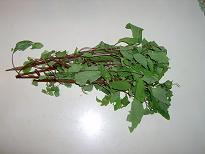
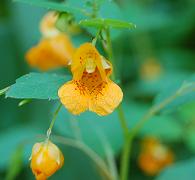 Picked a bunch of Jewelweed stalks and leaves today to make Jewelweed topical
tea. It is to be used externally only on poison ivy and nettle
stings (if I ever locate nettle). It can be put on prior to going into a poison
ivy-infested area or carried in a small container to put on the skin after
contact with poison ivy or nettles. Apparently, it can be used to treat
athlete’s foot and other skin inflammations.
Picked a bunch of Jewelweed stalks and leaves today to make Jewelweed topical
tea. It is to be used externally only on poison ivy and nettle
stings (if I ever locate nettle). It can be put on prior to going into a poison
ivy-infested area or carried in a small container to put on the skin after
contact with poison ivy or nettles. Apparently, it can be used to treat
athlete’s foot and other skin inflammations.
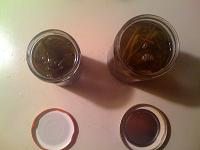
|
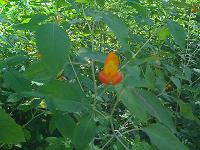
|
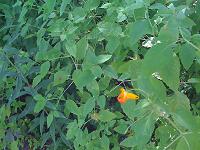
|
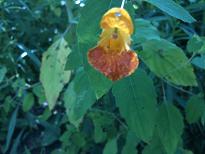
|
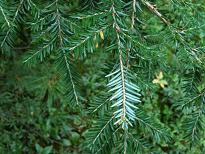
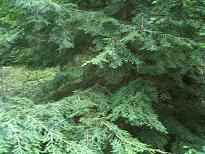 I went out and purchased a new iPhone 3GS yesterday so that I could take better
quality close-up pictures. It has a 3 Megapixel camera with autofocus and you can
select desired part of the image to focus on. So, today I hit the trail to try
the new camera.
I went out and purchased a new iPhone 3GS yesterday so that I could take better
quality close-up pictures. It has a 3 Megapixel camera with autofocus and you can
select desired part of the image to focus on. So, today I hit the trail to try
the new camera.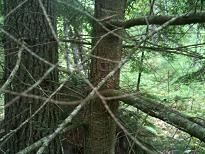
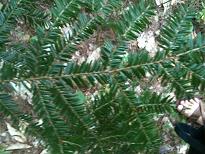
|
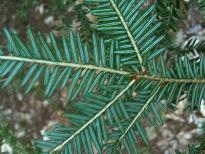
|
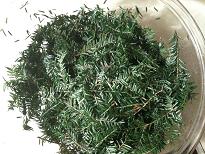
|
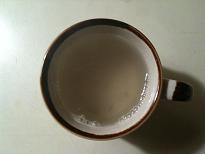
|
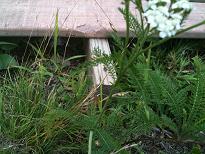
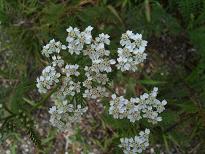 Yarrow is an important medicinal herb for helping to heal nervous system
disorders, colds and the flu. Yarrow tea is made by pouring very hot water
over fresh or dried yarrow leaves and steeping. I did not collect the leaves
and make yarrow tea this time. Perhaps later this year.
Yarrow is an important medicinal herb for helping to heal nervous system
disorders, colds and the flu. Yarrow tea is made by pouring very hot water
over fresh or dried yarrow leaves and steeping. I did not collect the leaves
and make yarrow tea this time. Perhaps later this year.
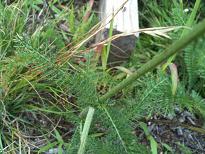
|
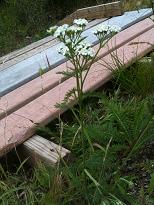
|
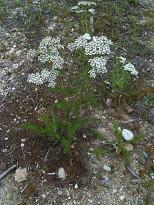
|
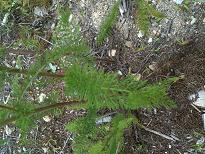
|
| Yarrow | Poison Hemlock |
|---|---|
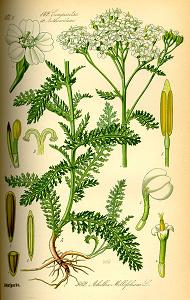
|
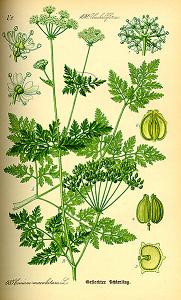
|
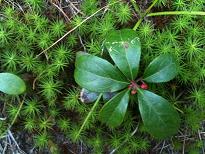
|
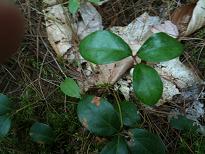
|
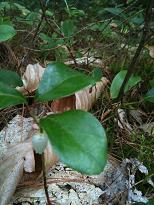
|
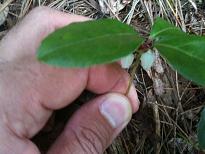
|
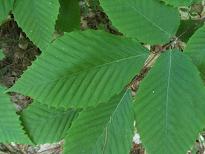
|
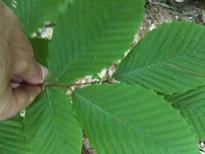
|
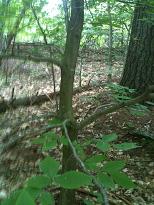
|
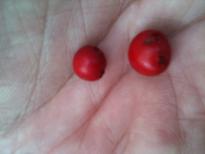
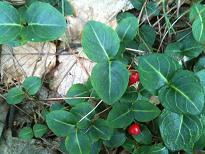 Went to the park this afternoon and worked on my laptop from the picnic bench.
That’s the way work should be every day! After work, I took a hike up
the trail to where I had found Partridge Berries in July. Nibbled on the berries
while taking some better-quality pictures with my new iPhone 3GS.
Went to the park this afternoon and worked on my laptop from the picnic bench.
That’s the way work should be every day! After work, I took a hike up
the trail to where I had found Partridge Berries in July. Nibbled on the berries
while taking some better-quality pictures with my new iPhone 3GS.
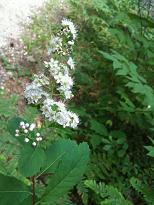
|
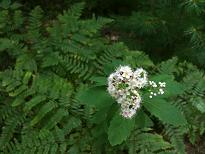
|
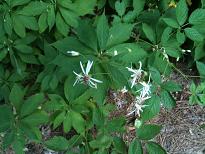
|